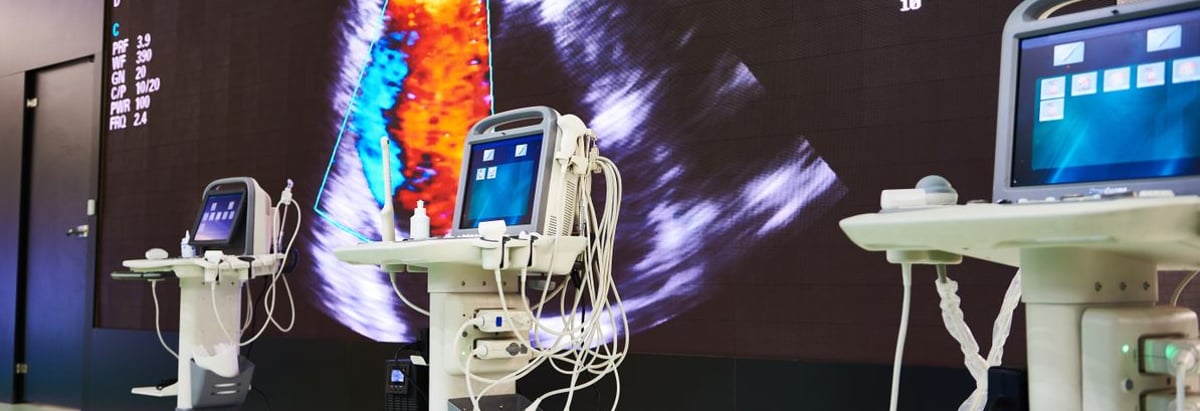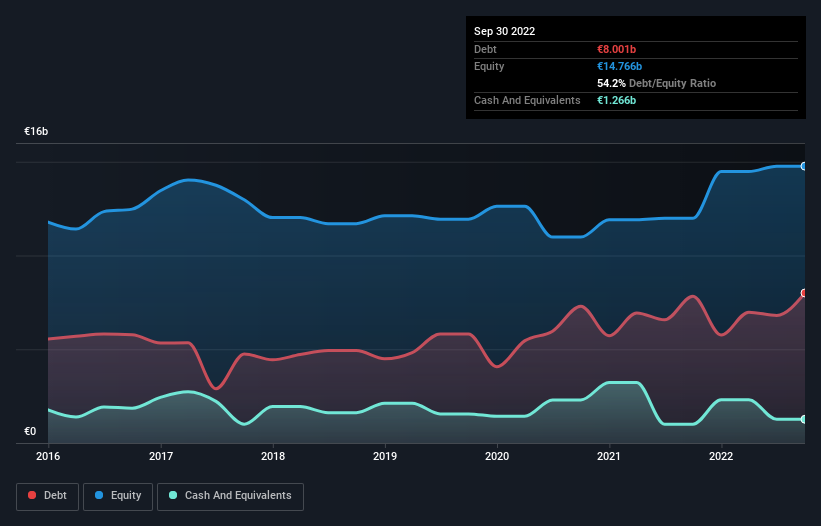- Netherlands
- /
- Medical Equipment
- /
- ENXTAM:PHIA
These 4 Measures Indicate That Koninklijke Philips (AMS:PHIA) Is Using Debt Extensively

Howard Marks put it nicely when he said that, rather than worrying about share price volatility, 'The possibility of permanent loss is the risk I worry about... and every practical investor I know worries about.' So it seems the smart money knows that debt - which is usually involved in bankruptcies - is a very important factor, when you assess how risky a company is. We note that Koninklijke Philips N.V. (AMS:PHIA) does have debt on its balance sheet. But the more important question is: how much risk is that debt creating?
Why Does Debt Bring Risk?
Debt is a tool to help businesses grow, but if a business is incapable of paying off its lenders, then it exists at their mercy. In the worst case scenario, a company can go bankrupt if it cannot pay its creditors. While that is not too common, we often do see indebted companies permanently diluting shareholders because lenders force them to raise capital at a distressed price. Of course, plenty of companies use debt to fund growth, without any negative consequences. The first thing to do when considering how much debt a business uses is to look at its cash and debt together.
Our analysis indicates that PHIA is potentially undervalued!
What Is Koninklijke Philips's Debt?
As you can see below, Koninklijke Philips had €8.00b of debt, at June 2022, which is about the same as the year before. You can click the chart for greater detail. However, it does have €1.27b in cash offsetting this, leading to net debt of about €6.74b.

How Strong Is Koninklijke Philips' Balance Sheet?
The latest balance sheet data shows that Koninklijke Philips had liabilities of €8.43b due within a year, and liabilities of €9.29b falling due after that. On the other hand, it had cash of €1.27b and €3.81b worth of receivables due within a year. So its liabilities outweigh the sum of its cash and (near-term) receivables by €12.6b.
When you consider that this deficiency exceeds the company's huge €12.2b market capitalization, you might well be inclined to review the balance sheet intently. In the scenario where the company had to clean up its balance sheet quickly, it seems likely shareholders would suffer extensive dilution.
In order to size up a company's debt relative to its earnings, we calculate its net debt divided by its earnings before interest, tax, depreciation, and amortization (EBITDA) and its earnings before interest and tax (EBIT) divided by its interest expense (its interest cover). The advantage of this approach is that we take into account both the absolute quantum of debt (with net debt to EBITDA) and the actual interest expenses associated with that debt (with its interest cover ratio).
Koninklijke Philips shareholders face the double whammy of a high net debt to EBITDA ratio (9.9), and fairly weak interest coverage, since EBIT is just 0.29 times the interest expense. This means we'd consider it to have a heavy debt load. Worse, Koninklijke Philips's EBIT was down 96% over the last year. If earnings keep going like that over the long term, it has a snowball's chance in hell of paying off that debt. There's no doubt that we learn most about debt from the balance sheet. But ultimately the future profitability of the business will decide if Koninklijke Philips can strengthen its balance sheet over time. So if you're focused on the future you can check out this free report showing analyst profit forecasts.
But our final consideration is also important, because a company cannot pay debt with paper profits; it needs cold hard cash. So we always check how much of that EBIT is translated into free cash flow. Happily for any shareholders, Koninklijke Philips actually produced more free cash flow than EBIT over the last three years. That sort of strong cash conversion gets us as excited as the crowd when the beat drops at a Daft Punk concert.
Our View
On the face of it, Koninklijke Philips's interest cover left us tentative about the stock, and its EBIT growth rate was no more enticing than the one empty restaurant on the busiest night of the year. But at least it's pretty decent at converting EBIT to free cash flow; that's encouraging. It's also worth noting that Koninklijke Philips is in the Medical Equipment industry, which is often considered to be quite defensive. Overall, we think it's fair to say that Koninklijke Philips has enough debt that there are some real risks around the balance sheet. If everything goes well that may pay off but the downside of this debt is a greater risk of permanent losses. The balance sheet is clearly the area to focus on when you are analysing debt. However, not all investment risk resides within the balance sheet - far from it. These risks can be hard to spot. Every company has them, and we've spotted 3 warning signs for Koninklijke Philips (of which 1 doesn't sit too well with us!) you should know about.
If, after all that, you're more interested in a fast growing company with a rock-solid balance sheet, then check out our list of net cash growth stocks without delay.
Valuation is complex, but we're here to simplify it.
Discover if Koninklijke Philips might be undervalued or overvalued with our detailed analysis, featuring fair value estimates, potential risks, dividends, insider trades, and its financial condition.
Access Free AnalysisHave feedback on this article? Concerned about the content? Get in touch with us directly. Alternatively, email editorial-team (at) simplywallst.com.
This article by Simply Wall St is general in nature. We provide commentary based on historical data and analyst forecasts only using an unbiased methodology and our articles are not intended to be financial advice. It does not constitute a recommendation to buy or sell any stock, and does not take account of your objectives, or your financial situation. We aim to bring you long-term focused analysis driven by fundamental data. Note that our analysis may not factor in the latest price-sensitive company announcements or qualitative material. Simply Wall St has no position in any stocks mentioned.
About ENXTAM:PHIA
Koninklijke Philips
Operates as a health technology company in North America, the Greater China, and internationally.
Undervalued with excellent balance sheet.
Similar Companies
Market Insights
Community Narratives


